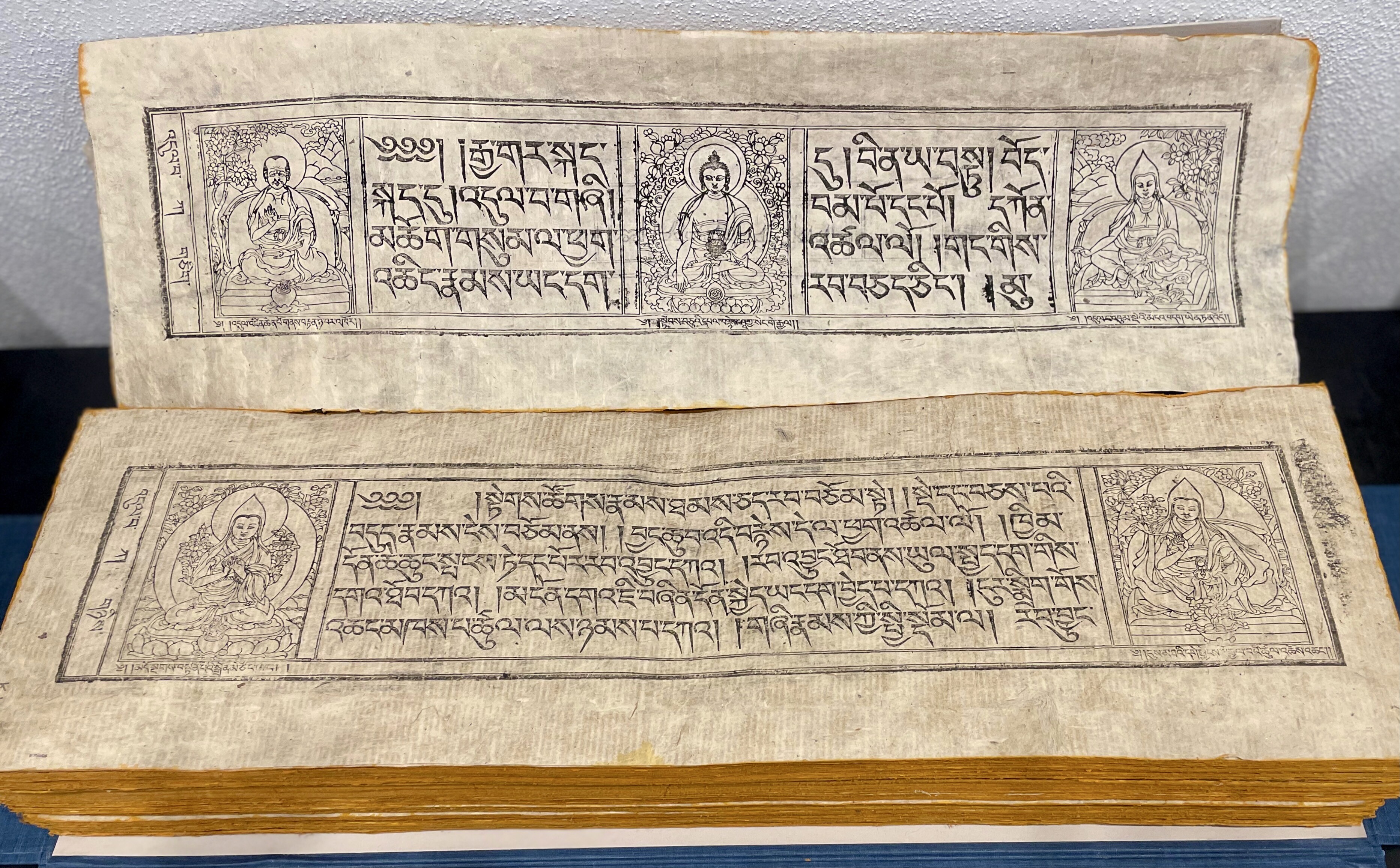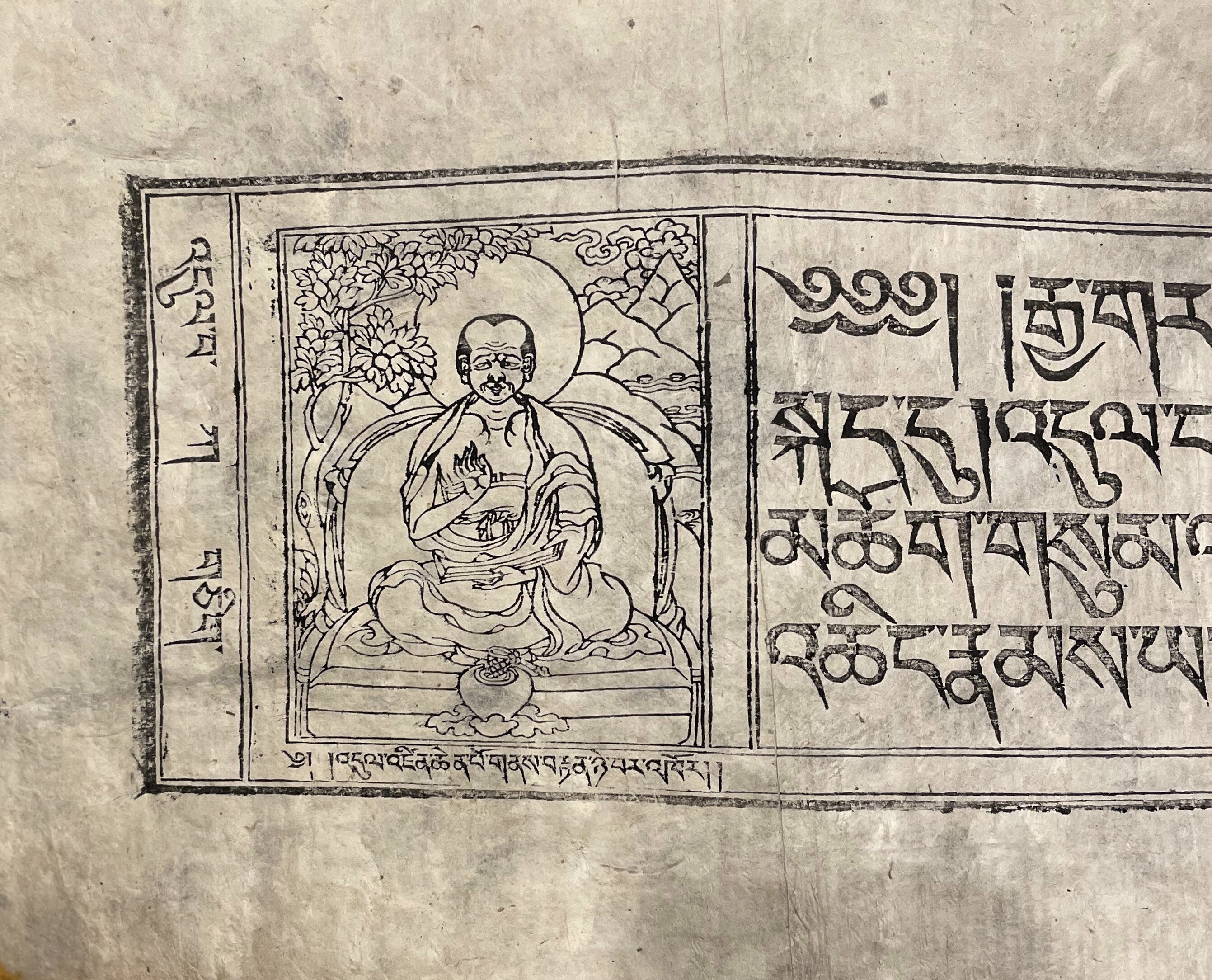Tibet Kanjur 1: The Dalai Lama’s Visit to Yale in October 1991
In October 1991, Tenzin Gyatso, the 14th Dalai Lama, visited Yale as a Tetelman Fellow. To a large crowd in Battell Chapel, he gave a speech about China’s occupation of Tibet entitled “Embracing the Enemy.” In his speech, the Dalai Lama spoke about “the struggle of the Tibetan people to regain our freedom after more than 40 years of oppression by the Chinese government.” Stressing the importance of preserving “our Buddhist culture of non-violence and compassion,” the Dalai Lama described his efforts to encourage world leaders to pressure the Chinese government into starting a meaningful dialogue about the restoration of Tibetan sovereignty. He ended his speech with his hope that the world could embrace “the Buddhist vision of a world based on compassion; a world without enemies, a world of peace and true happiness.” The Yale Daily News issue of 10 October 1991 had a nice description of the occasion.
During this visit to Yale, the Dalai Lama visited the Beinecke Library to view an exhibit of some pages from the Kanjur scriptural text that he had donated to Yale in 1950. The Kanjur (Tibetan bkan ‘gyur) literally means “the translated word” in Tibetan but it refers to the translated words of Gautama Buddha and his close disciples. As Tibet began to embrace Buddhism in the seventh century, many Mahayana Buddhist Sanskrit texts were brought to Tibet from India.

Figure 1. Cover with yellow fabric featuring a printed seal. Tibet Kanjur 1. Beinecke Rare Book & Manuscript Library.
Wesley Needham, the Yale librarian once in charge of the Beinecke’s Tibetan Collection, writes that “[t]he original Buddhist texts were translated by many erudite Indian monks, with the assistance of learned lamas. An Indian pundit and a Tibetan translator would work together, interpreting the source material, syllable by syllable. Some of the doctrines were translated as early as the latter part of the seventh century of the Christian era; but the majority of the teachings were translated into Tibetan between the ninth and the thirteenth centuries” (1952). He also notes that “[t]he Kanjur is extremely important also to Sanskrit scholars. Many Buddhist Sanskrit manuscripts have been lost; and some existing ones have been corrupted by unauthorized interpolations and by errors of copyists” (1952).

Figure 2. An open spread of woodblock prints featuring Tibetan text bounded by depictions of religious and historical figures. Tibet Kanjur 1. Beinecke Rare Book & Manuscript Library.
Multiple copies of these translations were hand-written and stored in various Tibetan Buddhist monasteries. At some point, these collections of manuscripts began to be organized and classified into formal collections. Two broad collections were formed: collections known as Kanjurs containing texts of Gautama Buddha’s direct teachings and collections known as Tengyurs (Tibetan bstan ‘gyur) containing commentaries on Gautama Buddha’s teachings along with other texts that the translators considered to be important. In 1411 CE, the first edition of the Kanjur was block-printed using woodblocks inscribed with text. Over the centuries, different editions of the Kanjurs and Tengyurs were hand-carved and block-printed in different monasteries which consisted of similar content but with different texts. The main Kanjurs that were printed were the Narthang, Degé, Urga and Lhasa editions.
In 1952, Wesley Needham described the donated Kanjur in the Yale University Library Gazette: “This Kanjur, printed at the Dalai Lama’s press in Lhasa, consists of one hundred bulky volumes, each approximately seven-and-a-half inches wide and twenty-five inches long. Every leaf is actually made up of several sheets of native paper, glued together with yak-hide glue in order to make it more durable. The leaves are unbound, resembling a huge pack of cards, and are printed on both sides from hand-carved wood blocks” (1952). “The Yale Kanjur consists of 96,368 pages. It therefore required 48.184 wood blocks, carved on both sides, to print this edition” (1960). There are “1,086 separate texts” in this edition, and “[t]he task of carving [the Lhasa Edition wood blocks] begun in 1920, was completed in 1927” (1952).
The Kanjur in the Beinecke Library was the first Kanjur “ever bestowed by a Tibetan ruler on an American educational institution” (Needham 1952).

Figure 3. One of the historical personages shown in Figure 2. Detail of Tibet Kanjur 1. Beinecke Rare Book & Manuscript Library.
The exhibit that the Dalai Lama visited at the Beinecke Library consisted of pages from the Kanjur that the Dalai Lama had donated to Yale. Since I was the only available scholar at Yale at that time who could read Classical Tibetan, I was asked to choose a number of pages for this exhibit. I chose some pages that contained material that I was familiar with from the Tibetan translation of the Sanskrit Jataka Tales that taught lessons from previous incarnations of Gautama Buddha, as well as pages that contained pictures of the Buddha meditating or teaching. When the Dalai Lama visited the exhibition, I had the honor of showing him around the exhibit and explaining why I had chosen the particular texts that were on display. The Dalai Lama was very engaging and had many interesting comments.
Hugh M. Flick, Jr.
April 18, 2022
Selected Bibliography
Gyatso, Tenzin. “Embracing the Enemy: Address of His Holiness the Dalai Lama at Yale University (U.S.A.), October 9, 1991”. The Office of Tibet – Pretoria. Link. Accessed December 11, 2021.
“Kanjur: Rgyal bai̕ bka ̕g̕yur rin po che.” Yale Univeristy Library Catalog. Orbis. Link. Accessed February 23, 2022.
“The Lhasa Edition of the Kanjur.” The Yale University Library Gazette 24, no. 4 (1950): 182. JSTOR. Link. Accessed January 6, 2022.
Needham, Wesley E. “The Significance of the Yale Kanjur.” The Yale University Library Gazette 27, no. 1 (1952): 48–51. JSTOR. Link. Accessed December 11, 2021.
Needham, Wesley E. “The Tibetan Collection at Yale.” The Yale University Library Gazette 34, no. 3 (1960): 127–33. JSTOR. Link. Accessed December 11, 2021.
“The Yale Daily News, 10 October 1991.” Yale Daily News Historical Archive. Link. Accessed January 6, 2022.
